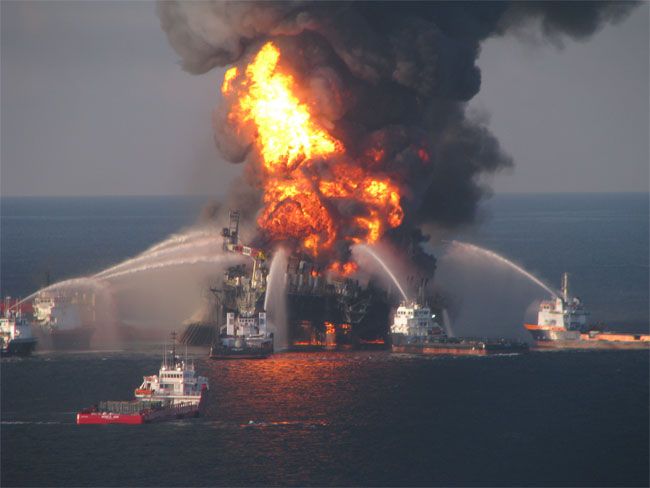
Wind Saved Florida, East Coast from Deepwater Horizon Oil Spill

Florida might have been saved by the wind.
At the time of the Deepwater Horizon oil spill in the spring of 2010, computer models predicted that the 200 million gallons of crude oil pouring out of the gusher at the bottom of the Gulf of Mexico would reach the coast of Florida and beyond, perhaps even extending to the Atlantic Ocean and East Coast.
But these calculations didn't account for one thing, according to a new study: prevailing winds. The study, published online in June in the journal Environmental Science and Technology, suggests the Gulf winds actually prevented oil from reaching Florida, instead pushing it north to beaches in Louisiana, Mississippi and Alabama.
"It is striking to notice how a large part of the surface oil erroneously made it to the Atlantic coast of Florida in the simulations that ignored the wind-induced drift," said study author Matthieu Le Hénaff, a researcher at the University of Miami.
At the time of the oil spill, which was the largest spill in American history, many feared that oil would enter the Loop Current, which shuttles water in the Gulf of Mexico east toward south Florida and out into the Atlantic Ocean.
To show what really happened, Le Hénaff and his colleagues retroactively tweaked computer models to include the effect of surface winds. The resulting simulation "correctly calculated the final destination of the oil along the Northern Gulf coastline, in remarkable agreement with observations," Le Hénaff said in a statement.
The winds influenced the oil by playing against the ocean's surface, creating waves and other circulations that influenced the surface drift of the oil.
Sign up for the Live Science daily newsletter now
Get the world’s most fascinating discoveries delivered straight to your inbox.
"The dominant northward winds during spring and summer of 2010 led the surface oil to be pushed onto the Northern Gulf shelf areas and toward the coasts, away from the interior of the Gulf and the Loop Current southward transport," Le Hénaff said.
Follow OurAmazingPlanet on Twitter @OAPlanet. We're also on Facebook and Google+.











